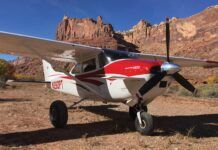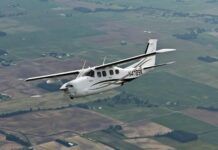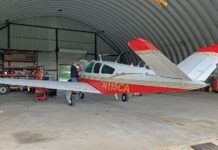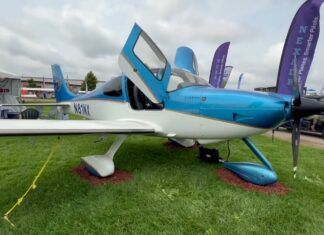There are a lot of airplanes that are alleged to be good for backcountry operations by pilots who want to seriously recreate. In doing research for this article, we spent an extended period speaking with the proprietors of Backcountry Aviation in Nampa, Idaho, Kasey Lindsay and Bob Hannah and with Jeff Welch, who gives type-specific utility/STOL training, primarily in the Husky, in Alpena, Michigan. All are highly experienced backcountry pilots.
We asked them for their thoughts on the attributes of a good STOL/backcountry machine. We combined their comments, along with reviews in this magazine of rugged utility airplanes, to come up with our list of as to what makes a good backcountry airplane.
Landing gear strength and stability. It has to absorb punishment from solid touchdowns as we’ll as ever-present rocks, brush and holes. The brake lines should be protected as there’s a good chance a gear leg is going to strike something that could break an exposed brake line.
The gear geometry should make ground handling as easy as possible and minimize the risk of noseovers in tailwheel airplanes. The most common cause of accidents in backcountry flying is loss of control on landing—gear design matters.
In addition, the gear geometry of a tailwheel airplane should allow a competent pilot to apply the brakes while the tail is off the ground to allow good visibility over the nose and maximize deceleration. Nevertheless, we strongly advise this be done with extreme caution as the rate of flipover accidents is high.
Suitable stability in pitch to allow precise speed control on final.
Flaps should provide high drag and rapid deceleration so the airplane doesn’t float if the pilot isn’t perfect with airspeed control.
Easy access to the flap control.
Good visibility over the nose during all phases of landing and takeoff. Hitting obstructions short of, on the runway and just after liftoff are common cause of backcountry accidents. An airplane that has the nose block forward visibility is at risk of hitting something. The nosewheel King Katmai is proving popular partially because of its good visibility over the nose. No nasty behavior in a slip—and the ability to slip steeply, hold the slip into the flare and straighten out at the last moment.
A design that allows installation of oversize tires.
Power. Lots of it. When things go wrong, the ability to climb steeply and rapidly may mean everything. As Kasey Lindsay put it, the airplane has to be able to “climb like a rocket and come out of the sky like a piano.”
Good prop clearance.
High wing for brush clearance.
Good overall visibility. When maneuvering for a runway in a canyon, a skylight means you can see what you need to see in a steep turn. Having lots of window area, with few bars and posts that can get in the way is important—especially when looking down and aft, something you do surprisingly often.
Excellent control response in gusty crosswinds and the ability to pin the airplane after landing so a gust doesn’t put it back into the air.
Easy-to-use, fast-acting trim system.
The ability to go around at the last possible moment, without a lot of trim change when going to full power in landing configuration—you don’t want to have to be stiff-arming the stick or yoke while you’re trying to get maximum performance out of the airplane.
A good mix between STOL ability and cruise speed. Sacrificing everything for STOL means a slow airplane in cruise. The ideal backcountry airplane will handle an 800-foot strip safely and get there and back home without having to time the trip with a calendar or worry about running out of fuel.




